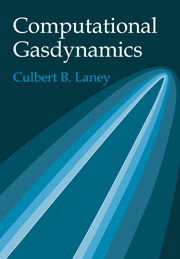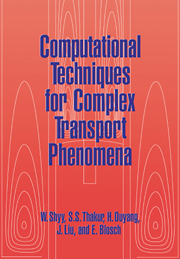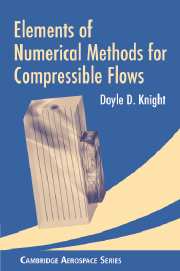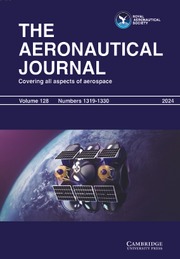Computational Gasdynamics
Numerical methods are indispensable tools in the analysis of complex fluid flows. This book focuses on computational techniques for high-speed gas flows, especially gas flows containing shocks and other steep gradients. The book decomposes complicated numerical methods into simple modular parts, showing how each part fits and how each method relates to or differs from others. The text begins with a review of gasdynamics and computational techniques. Next come basic principles of computational gasdynamics. The last two parts cover basic techniques and advanced techniques. Senior- and graduate-level students, especially in aerospace engineering, as well as researchers and practicing engineers, will find a wealth of invaluable information on high-speed gas flows in this text.
- Devoted to computational gasdynamics, essential for aerospace engineering
- Difficult subject made accessible by good, clear writing
- Includes hundreds of figures, examples and homework problems
Reviews & endorsements
"...the author has succeeded admirably. Highly recommended for personal use and purchase by students and mature practitioners." Applied Mechanics Reviews
"...provides a good text bridging advanced shock-capturing methods to numerical basics. The author has painstakingly tried to explain the simple philosophies underlying the complex material...Extensive citations make the book a good reference for students and CFD practitioners alike." The Aeronautical Journal
"The book is written in an easy-to-read style: readers can glean as much theory as they wish or can delve directly into how to apply the techniques to real problems. There are plenty of examples. Many techniques are illustrated with application to Burger's or Euler equations, and the author includes many good homework problems." Choice
"This book would make an excellent textbook for a course in computational fluid dynamics...The book is carefully written and is surprisingly readable...The choice of nomenclature is sensible and mainstream, and Laney has cited the most important papers in the literature. This is a very useful book, and I highly recommend it to anyone working in compressible flow computations." AIAA Journal
"...an interdisciplinary reference easily usable by practitioners of different disciplines...this book has the rare virtue of playing two roles well at the same time. On the one hand, it can be appreciated as a valuable textbook for an introductory, as well as for an advanced course on numerical gas dynamics. On the other hand, it can be appreciated as a reference book or a 'user manual' for the practitioners interested in numerically solving engineering or research problems in gas dynamics. I think the author should be congratulated on producing such a useful work, including the comprehensive and well-organized bibliography." Journal of Fluids and Structures
Product details
June 1998Paperback
9780521625586
632 pages
243 × 173 × 33 mm
0.99kg
213 b/w illus.
Available
Table of Contents
- Preface
- 1. Introduction
- Part I. Gasdynamics Review:
- 2. Governing equations of gasdynamics
- 3. Waves
- 4. Scalar conservation laws
- 5. The Riemann problem
- Part II. Computational Review:
- 6. Numerical error
- 7. Orthogonal functions
- 8. Interpolation
- 9. Piecewise-polynomial reconstruction
- 10. Numerical calculus
- Part III. Basic Principles of Computational Gasdynamics:
- 11. Conservation and other basic principles
- 12. The CFL condition
- 13. Upwind and adaptive stencils
- 14. Artificial viscosity
- 15. Linear stability
- 16. Non-linear stability
- Part IV. Basic Methods of Computational Gasdynamics:
- 17. Basic numerical methods for scalar conservation laws
- 18. Basic numerical methods for the Euler equations
- 19. Boundary treatments
- Part V. Advanced Methods of Computational Gasdynamics:
- 20. Flux averaging I: flux-limited methods
- 21. Flux averaging II: flux-corrected methods
- 22. Flux averaging III: self-adjusting hybrid methods
- 23. Solution averaging: reconstruction-evolution methods
- 24. A brief introduction to multi-dimensions
- Index.





